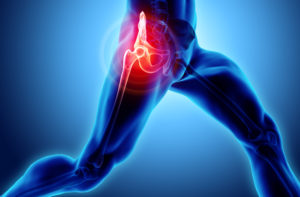
Hip & Knee Replacement
Hip replacement procedures began only in the 1960s when an English surgeon cemented a plastic socket into the pelvis. a metal ball was cemented onto the upper tip of the femur. This combination rebuilt the hip joint and served as a revolutionary treatment for hip arthritis at that time. In the 1970s, surgeons began performing similar techniques to replace damaged and arthritic knee joints. Since that time, procedural techniques have continued to evolve. More than 500,000 hip and knee replacements are performed most years, and they are now often done so on an outpatient basis. Previously, these procedures required a hospital stay, often a blood transfusion, and many months of rehabilitation. And still, there were high risks for long-term problems associated with wear and tear and loosening in the joint.
Due to the limitations related to the outcomes of hip and knee replacements, procedures used to be reserved for older individuals. Today, these surgeries are routinely performed on younger patients who are still living active lives. Surgical expectations even allow for patients to return to strenuous activities, including various sports. In addition to speedier recovery from surgery, these replacement procedures are much more comfortable today than they used to be.
The pain of an arthritic joint may not feel any worse than the pain that occurs after a joint replacement. Today, the focus of surgery is to restore the function of the joint with the least tissue trauma. Doctors utilize a range of techniques to improve the duration of pain relief during the post-operative period. Examples include the use of regional anesthesia and longer-acting oral pain medication. Thanks to these improvements, knee and hip replacement patients are typically up and out of bed the same day as their procedure. Physical therapy may begin as soon as the day following surgery, and overall recovery times are generally shorter.
Contact Us to Learn More
Hip and knee surgeries are usually performed using minimally invasive surgical techniques. These reduce the potential for complications, shorten recovery time, and improve post-operative comfort more quickly. If you need treatment for chronic hip or knee pain, contact Orthopedic Associates of Long Island, we have multiple locations to serve you.